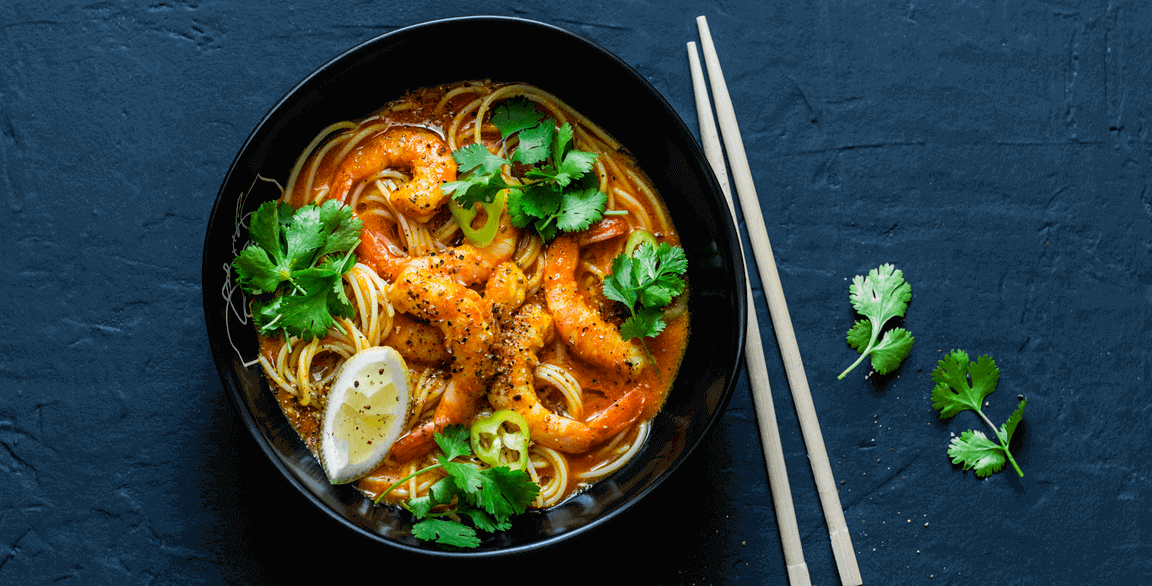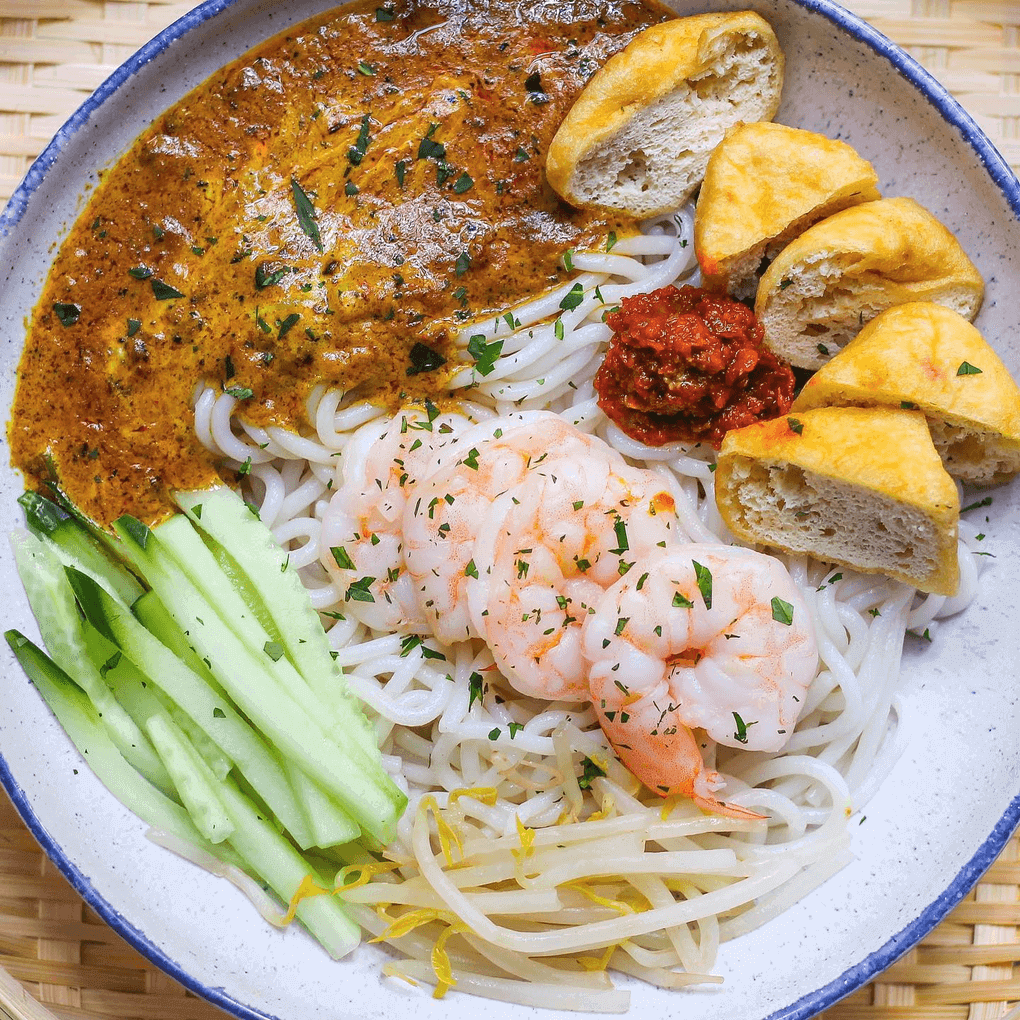

It’s hard to believe there was a time when anyone was skeptical of ramen’s success in foodservice. Yet a decade ago, when ramen was on less than 1 percent of U.S. menus, many were skeptical that stateside consumers would pay upwards of $10 for a bowl of soup they were used to paying a dime or two for at retail. Today, of course, there are dedicated ramen restaurants in cities across the country, chefs continue to riff on ramen, and a generation of consumers are growing up associating ramen with craft and comfort. So, what should be on your radar if you don’t want to miss out on the next slurpable soup phenomenon from Asia? The answer is laksa.
Found throughout Southeast Asia, though perhaps most associated with Indonesia, Malaysia and Singapore, there are as many variations on laksa as there are cooks in the region. Originally created by the Peranakans, or the descendants of Chinese immigrants who settled throughout the Straits of Southeast Asia, laksa generally consists of noodles (often thick rice noodles) in a spicy broth. Like in ramen, however, that simple equation can yield an endless array of flavor-forward builds. Rich, creamy, curry-based broths, typically made with coconut milk, are leading the U.S. trend, often topped with proteins like chicken, shrimp, or fried tofu (or all three) and finished with a hard-boiled egg and a range of herbs and vegetables, including bean sprouts, sambal, and fried shallots. Packing its own flavorful punch, decidedly sour asam laksa is usually fish-based, with a broth that includes tamarind and pineapple juice for that puckery punch, plus herbs and vegetables like chiles, lemongrass, ginger flower, mint and laksa leaves, and it’s all finished with rice noodles and shrimp paste.
ON THE MENU

Native Noodles owner Amy Pryke says “dry” laksas have been trending in Singapore recently and are a great option in warmer months when customers may not want a hot bowl of soup.
Though laksa has grown an astonishing 299 percent on menus in the past four years, according to Datassential, it’s still a relatively new concept for many American consumers. At KIN Craft Ramen & Izakaya in Fountain Valley, Calif., the bridge from ramen to laksa is explicitly spelled out for customers with the Spicy Seafood Laksa Ramen, a coconut cream-based soup built around lump crab, bay scallops, calamari, and shrimp. It’s all finished with a shio egg, fresh bean sprouts, green onions, spinach, rich rau ram butter and crunchy nori.
When Amy Pryke first launched her Singaporean Native Noodles stall at New York’s Queens Night Market, she knew she wanted to debut with laksa. “I felt it encapsulated Singapore’s cuisine perfectly,” she says, noting that it combines multicultural elements like Chinese rice noodles, Malay spice paste (rempah) and coconut milk, which might even indicate an Indian influence. That stall blossomed into a brick and mortar in Washington Heights last year, where the signature dish is a “dry” laksa that might be likened to a noodle stir fry, featuring thick rice noodles in a thick coconut-shrimp curry served with bean sprouts, cucumbers, and crispy onions, plus a choice of chicken, tofu, honey-roasted pork, or a soft-boiled egg to top it all off.







